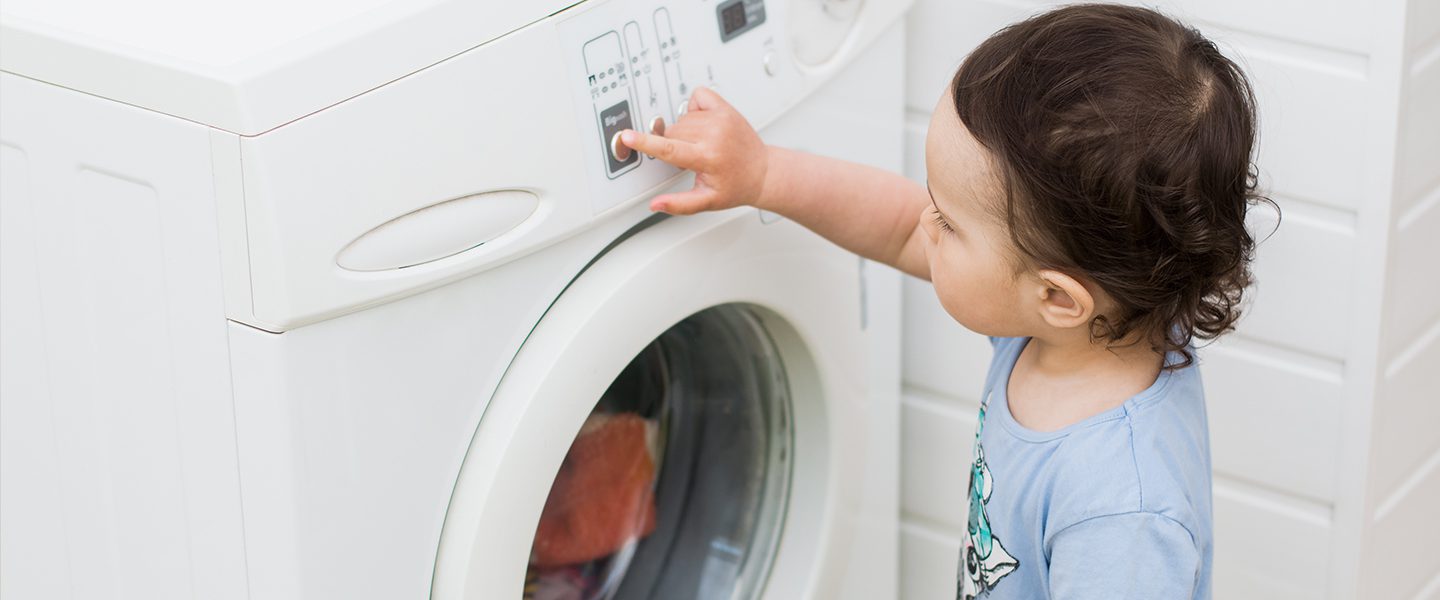How to fix 7 common baby clothing stains
A new member of the family brings lots to think about – not to mention all the costs that come with a baby! Whilst they might seem to grow out of their clothes overnight, here are some tips to help keep baby clothes in good condition a little longer. It’s an easy way to save money, and also means they’ll be good to pass on to future family (siblings!?) or in your community when they are outgrown.
With UK parents spending £6.8 billion on children’s clothing each year, and 11 million pieces of clothing being thrown away every single week, it’s a win all round to keep more clothes out of landfill, and being used by little ones who need them.
Here’s how to deal with 7 common stains.
These tips are part of something bigger. At Hubbub, we want to see a world where everyone makes choices that are good for the environment. Check out what we do and how your actions add up.
Baby sick from breastmilk is quite easy to remove. Simply wash as normal with liquid laundry detergent. Mild detergents should work fine - if a stronger cleaning agent is needed, use normal detergent and run an extra rinse cycle to remove any remaining soap.
Once washed, hang clothing to dry in the sunshine. The bleaching effects from the sun will remove the remaining stains. If the sunlight doesn’t work, dab a small amount of lemon juice on the area. Place in direct sunlight again until dry.
The chemical make-up of formula can make it tricky to get off. First, remove as much as possible with a stiff brush. Then lay the clothing in a sink or tub. Sprinkle the entire stain with baking soda. After that, pour some club soda / sparkling water over the stain (this will make the baking soda fizz).
Allow the piece to sit and fizzle until the bubbling stops, then wash as normal with detergent and warm water. Baby detergents should be enough but if you need a more powerful detergent, use regular detergent and run an extra rinse cycle to ensure all of the soap residue is removed, as leftover soap can irritate babies’ sensitive skin.
Allow the clothing to air-dry away from heat. If the stain remains, repeat the steps above.
Fill a bucket with hot water, add dishwasher detergent and mix thoroughly. Soak clothing overnight. Remove and launder as usual. Rinse well - run extra rinse cycles - to remove all of the soap. If the stains are light, simply add the dishwasher detergent to the washing machine water.
If you’re able to, run the clothing under cold water immediately, removing as much of the poop as you can, then launder as normal. If you’re unable to wash immediately, soak clothing in cold water until you can deal with it.
After washing, leave to dry on a rack or better yet, take advantage of the sun’s amazing bleach-free, stain removal properties. Avoid the tumbler, as it can cause any stains to set.
Remove any excess bits and cover the stained area with cornflour, talcum powder, or baking soda. After 15 minutes, scrape this off, and launder as you usually would.
Rinse food stain right away with cool water. Put a small amount of washing up liquid on the stain, rub in gently and leave for at least half an hour. Rinse this out in cold water, and put more washing up liquid on, then put in washing machine and wash as normal. The sooner you can act the better, as dried stains are harder to get out.
Same as above! If you're finding yourself soaking clothes a lot, saving and using the cool water from when your shower is heating up is a great way to double up. It will give you a set time to get those quick chores out the way, and also help save water!
If the clothes are too worse for wear, or simply grown out of, here's what to do.
Want more on how to make your wardrobe work for you and the planet?
Tune into the new season of our podcast ‘Down to Earth’ to explore everything sustainable fashion in conversation with designers, experts and changemakers.
See Hubbub in action
From Community Fridges that cut food waste to Ballot Bins that halve cigarette litter, our campaigns show what taking action that's good for the environment looks like in practice.
